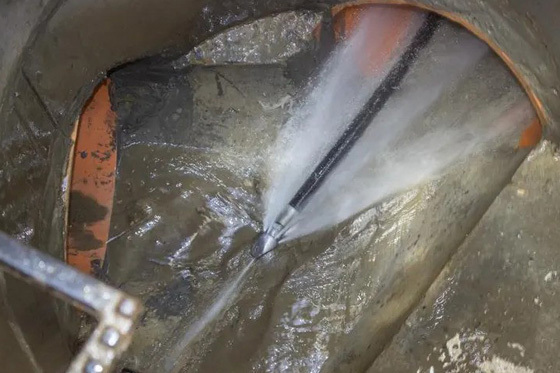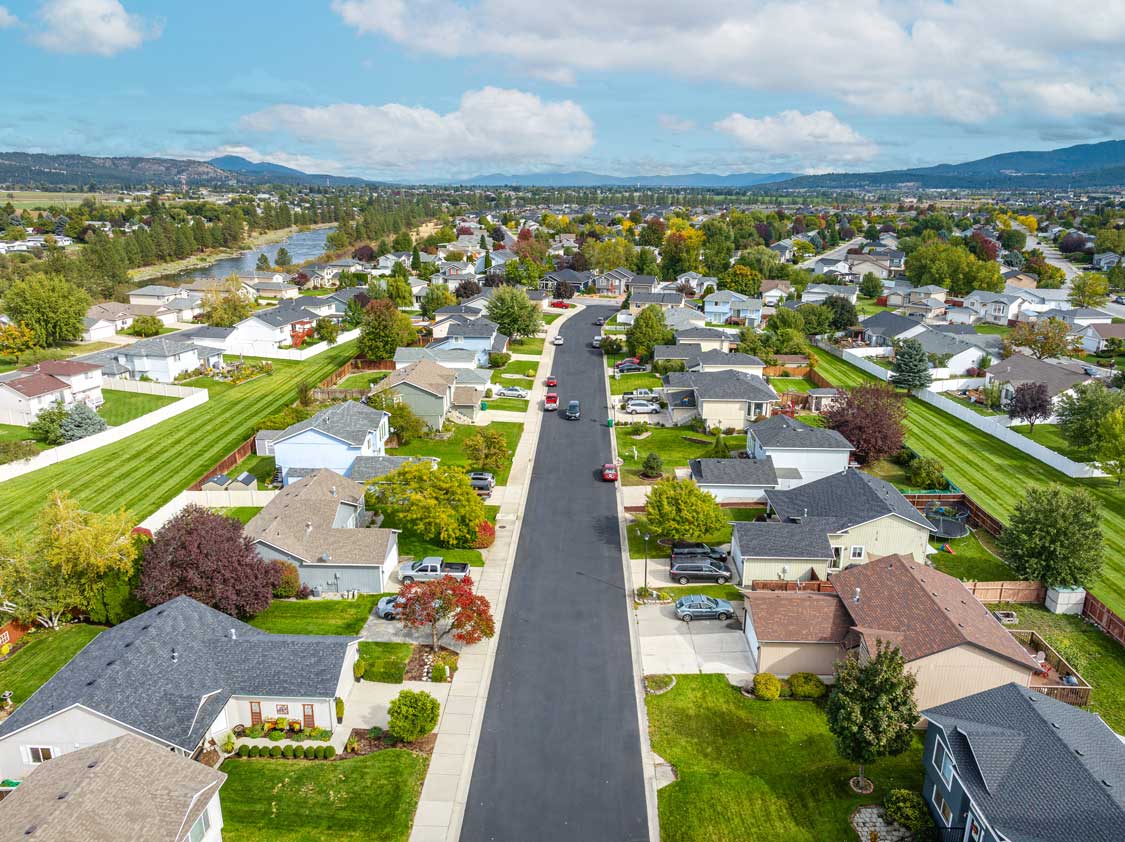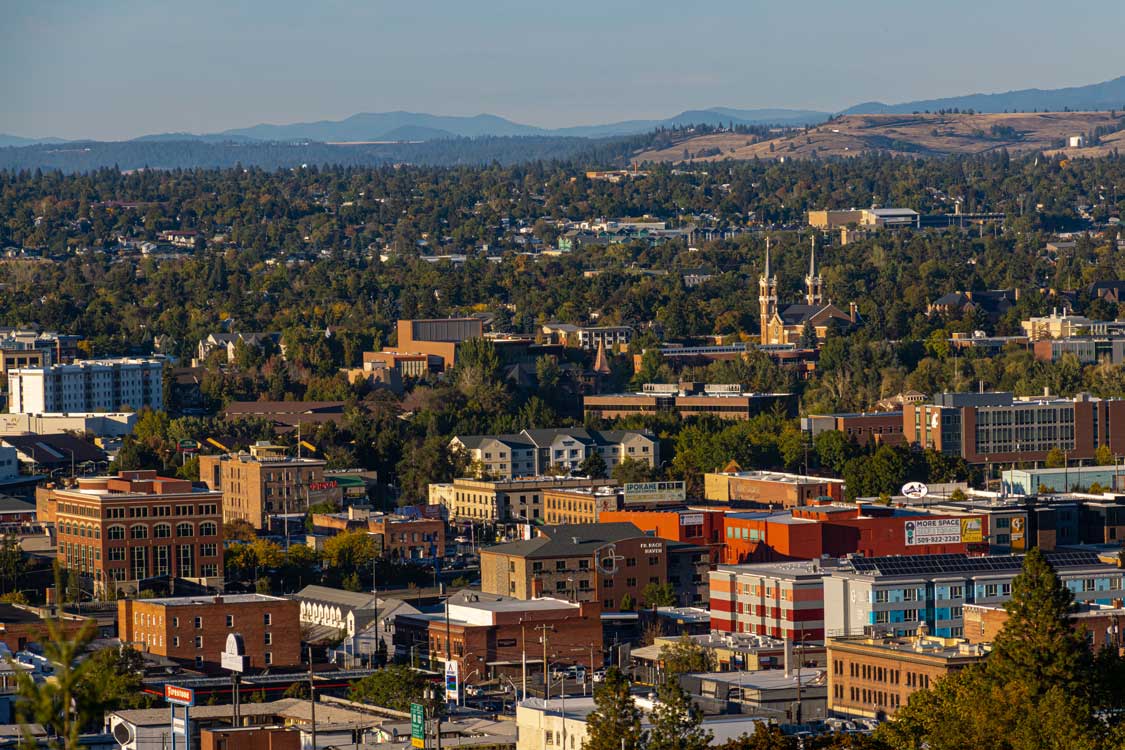Edited: June 16, 2025
If your drains keep clogging no matter how often you clear them, you’re not alone, and you’re not doing anything wrong. Kitchen grease, bathroom grime, and even tree roots can slowly build up inside your pipes, causing clogs to return again and again.
Sure, plungers and snakes might get things moving for now. But if you want to stop fighting the same clog over and over, it’s time to bring in a stronger solution.
Enter hydrojetting.
This professional-grade, high-pressure water cleaning process doesn’t just poke a hole through a blockage—it scours your pipes clean from the inside out. When done by a trained expert using a hydrojet drain cleaner, it’s one of the most effective, long-lasting drain cleaning solutions available.
Why Do Some Drain Clogs Keep Coming Back?
Clogs that return again and again are usually a sign of deeper buildup. While a plunger might clear the visible blockage, it doesn’t reach the root cause.
- Grease and soap scum stick to pipe walls, especially in kitchens.
- Hair and hygiene products coat bathroom drains, catching more debris as water flows.
- Tree roots can break into sewer lines underground, growing thicker and more stubborn over time.
With traditional cleaning methods, these materials often get pushed around instead of fully removed—leading to more clogs, more mess, and more frustration.
Why Traditional Drain Cleaning Doesn’t Always Work
You’ve probably tried one—or all—of these:
Drain Snakes
A snake or auger breaks through the clog but doesn’t clean the pipe walls. The result? A temporary fix. Grease and sludge stay behind, and new clogs form fast.
Chemical Cleaners
Store-bought drain cleaners seem convenient but come at a cost. They only work on minor clogs and can eat away at your pipes over time, leading to leaks and expensive repairs.
Plungers
Great for quick, surface-level clogs—but not much help against buildup that lives deeper in your plumbing system.
So, what do you do when the basics just don’t cut it anymore?
What Is Hydrojetting?
Hydrojetting (also called hydrojet drain cleaning) is a professional method that uses pressurized water to blast away everything coating the inside of your pipes.
Instead of just poking through a clog, a hydrojet drain cleaner scrubs your plumbing system clean. It’s like power-washing your pipes from the inside—removing not just blockages but all the sticky buildup that causes them in the first place.
How Hydrojetting Works
- A trained plumber uses a machine that includes a high-pressure water pump and a flexible hose with a special nozzle.
- The hose is inserted into your drain or cleanout.
- Water is blasted through the hose at pressures high enough to slice through grease, sludge, and even roots.
- The debris is flushed safely out of your plumbing system.
This method is incredibly thorough—leaving your pipes nearly as clean as the day they were installed.
Why Choose Hydrojetting Over Other Drain Cleaning Options?
1. It Completely Clears Tough Blockages
Whether it’s layers of grease, hard mineral deposits, or intrusive tree roots, hydrojetting gets rid of it all. No half-cleans or quick fixes—just fully cleared pipes.
2. It Cleans the Entire Pipe, Not Just the Clog
A drain snake carves a narrow path. Hydrojetting restores the full diameter of your pipe by removing all buildup from the walls. That means faster drainage and fewer future issues.
3. It Prevents Clogs From Coming Back
By stripping away the residue where future clogs form, hydrojet drain cleaning is a long-term solution—not just a short-term patch.
Signs You Might Need Hydrojet Drain Cleaning
Not sure if hydrojetting is the right service for you? These signs are good indicators:
- Slow drains that keep backing up: Even after plunging, if your drains still move slowly or re-clog within weeks, there’s likely deeper buildup.
- Frequent use of drain snakes or chemical cleaners: If you’ve snaked your drain more than once this year or rely on liquid drain cleaner often, it’s time to try something stronger—and safer.
- Multiple fixtures backing up at once: When more than one drain (like your tub, toilet, and kitchen sink) backs up at the same time, it usually means your main sewer line is clogged. A hydrojet drain cleaner can clear that big blockage quickly.
Is Hydrojetting Safe for My Plumbing System?
Yes—when done by a professional. Hydrojetting is safe for most modern plumbing systems, including PVC and cast iron.
What About Older Pipes?
If your home has clay, galvanized, or corroded pipes, your plumber will first perform a camera inspection. This step ensures your system can handle high-pressure cleaning safely.
If there’s structural damage, cracks, or weak joints, your technician may recommend an alternative like trenchless pipe repair before hydrojetting.
How Much Does Hydrojet Drain Cleaning Cost?
The cost of hydrojet drain cleaning can vary depending on several factors:
- The location of the clog (e.g., kitchen sink vs. main line)
- How severe the buildup is
- Whether a camera inspection is required
- Accessibility of your plumbing cleanout
Most professional hydrojetting services cost more than snaking, but they pay off by providing a more thorough and longer-lasting result. It’s a smart investment if you’re tired of repeat clogs and emergency calls.
Want a clearer idea of your hydrojet drain cleaning cost? We can provide an estimate after a quick inspection.
Why Bulldog Rooter Is Your Best Bet for Hydrojetting in Spokane & North Idaho
At Bulldog Rooter, we take pride in getting the job done right—the first time. Our trained professionals use top-tier hydrojet drain cleaners to restore your pipes quickly and safely.
We serve homeowners across Eastern Washington and Northern Idaho, offering:
- 24/7 emergency service with no hidden fees
- Upfront pricing and honest recommendations
- Friendly, professional plumbers who treat your home with respect
Frequently Asked Questions About Hydrojetting
What Is Hydrojetting, and How Does It Work?
Hydrojetting uses high-pressure water to clean out pipes from the inside, cutting through blockages like grease, roots, and soap scum. A professional plumber inserts a flexible hose into the drain and blasts pressurized water through the line, flushing debris safely out of the system.
What Makes Hydrojetting Better Than Other Drain Cleaning Methods?
Unlike snaking or plunging, hydrojetting doesn’t just poke a hole through the clog—it scrubs the pipe clean. Benefits include:
- Full pipe wall cleaning
- Long-term prevention of future clogs
- Safe for most pipes (after inspection)
- Chemical-free and eco-friendly
- Effective against tree roots and sludge
Is Hydrojetting Safe for My Home’s Plumbing System?
Yes, when performed by a professional. Bulldog Rooter always begins with a camera inspection to ensure your pipes are strong enough for hydrojetting. For older or fragile lines, we’ll recommend safer alternatives if needed.
How Much Does Hydrojetting Cost?
Typical hydrojetting costs range from $300–$600, depending on:
- The location and severity of the clog
- Whether camera inspection is needed
- Accessibility of your cleanout
We’ll provide a clear estimate after your inspection. While most insurance won’t cover regular maintenance, it may help if the clog caused damage. Ask your provider for details.
How Can I Tell If I Need Hydrojetting?
Call Bulldog Rooter if you notice:
- Drains that re-clog after DIY attempts
- Gurgling toilets or slow-flowing fixtures
- Bad smells from sinks or tubs
- Multiple clogged drains at once
These signs often point to buildup deep in your system that only hydrojetting can fully clear.
Can I Do Hydrojetting Myself?
We don’t recommend it. Professional hydrojet drain cleaners use extremely high pressure that can damage pipes or injure you if mishandled. Plus, without a camera inspection, you might make things worse. Let Bulldog Rooter do it safely—and thoroughly—the first time.
Call Now to Schedule Your Drain Inspection or Hydrojet Cleaning
Don’t let one stubborn clog turn into a costly plumbing emergency. Bulldog Rooter is ready to help—any time, day or night.
Call (509) 687-7001 to schedule your plumbing inspection or hydrojetting service now.







